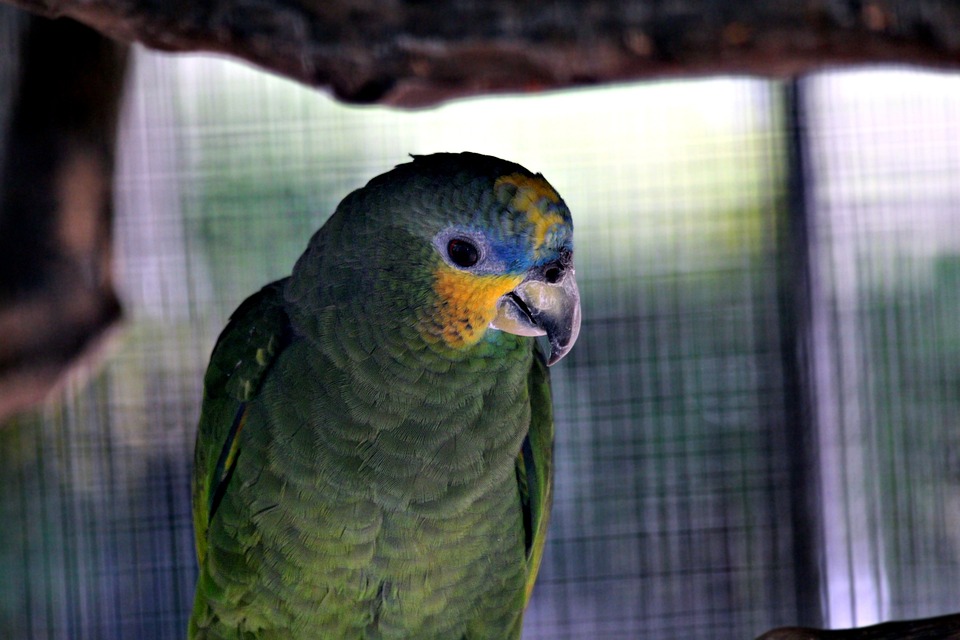**Encouraging Parrots to Interact with Different Training Puzzles: A Comprehensive Guide**
*Unlocking the Potential of Your Parrot’s Intelligence*
Parrots are highly intelligent creatures that thrive on mental stimulation. Training puzzles are an excellent way to engage your parrot’s mind and encourage problem-solving skills while strengthening your bond. In this article, we will explore effective strategies to encourage parrots to interact with different training puzzles, ensuring a rewarding and enriching experience for both you and your feathered friend.
Understanding the Importance of Training Puzzles for Parrots
Before diving into the specifics of training puzzles, it’s essential to understand why they are such a valuable tool for parrot training:
1. Mental Stimulation: Parrots require mental engagement to prevent boredom and associated behavioral issues. Training puzzles provide an outlet for their curious nature, keeping their minds active and healthy.
2. Problem-Solving Skills: Working on puzzles challenges parrots to problem-solve, enhancing their cognitive abilities and fostering critical thinking skills.
3. Bonding Opportunity: Training puzzles offer an opportunity for you and your parrot to collaborate and build a stronger bond. The shared experience of solving puzzles together can deepen your relationship.
Choosing the Right Training Puzzles for Your Parrot
Not all training puzzles are created equal. Parrots have varying aptitudes and preferences, so it’s crucial to select puzzles that align with your parrot’s abilities and interests. Here are some factors to consider:
1. Difficulty Level: Start with simple puzzles to ensure your parrot can grasp the concept and experience success. Gradually introduce more challenging puzzles as your parrot progresses.
2. Interactive Elements: Parrots tend to respond well to puzzles that involve manipulation, such as unlocking doors, turning knobs, or sliding objects. Look for puzzles that require physical engagement.
3. Variety: Introduce a variety of puzzle types to keep your parrot engaged and prevent monotony. This can include puzzles with hidden treats, color-based challenges, or shape sorting activities.
Introducing Training Puzzles to Your Parrot
Now that you have chosen the right training puzzles for your parrot, it’s time to introduce them effectively:
1. Gradual Introduction: Start by placing the puzzle near your parrot’s cage, allowing them to observe and become familiar with it. This helps build curiosity and anticipation.
2. Positive Reinforcement: Encourage your parrot by offering verbal praise, treats, or their favorite toys whenever they show interest in or interact with the puzzle. Positive associations motivate them to continue exploring.
3. Guided Exploration: Initially, guide your parrot’s beak or claws toward the puzzle’s interactive elements. This helps them understand the goal and encourages them to mimic the behavior.
FAQs – Frequently Asked Questions
Q1: Can any parrot breed be trained to interact with puzzles?
A1: Yes, training puzzles are suitable for most parrot breeds. However, keep in mind that individual parrots may have varying levels of interest and aptitude for puzzle-solving.
Q2: How often should I introduce new training puzzles?
A2: It’s best to introduce new puzzles gradually, ensuring your parrot has mastered the previous ones. Overwhelming them with too many puzzles at once can lead to frustration.
Q3: What if my parrot shows no interest in the training puzzle?
A3: Patience is key. Some parrots may take longer to warm up to puzzles. Try offering treats or engaging in the puzzle yourself to spark their curiosity. If they continue to show disinterest, consider trying a different puzzle type.
Q4: Are there any safety precautions I should take when using training puzzles?
A4: Always choose puzzles made from bird-safe materials and avoid small parts that could be swallowed. Supervise your parrot during puzzle sessions to ensure their safety.
Q5: Can training puzzles replace social interaction with my parrot?
A5: Training puzzles are a valuable addition to your parrot’s enrichment routine, but they should not replace social interaction. Spend quality time with your parrot outside of puzzle sessions to maintain a strong bond.
Remember, patience and positive encouragement are key when introducing training puzzles to your parrot. With time and practice, your feathered friend will develop problem-solving skills and enjoy the mental stimulation these puzzles provide. Happy training!









